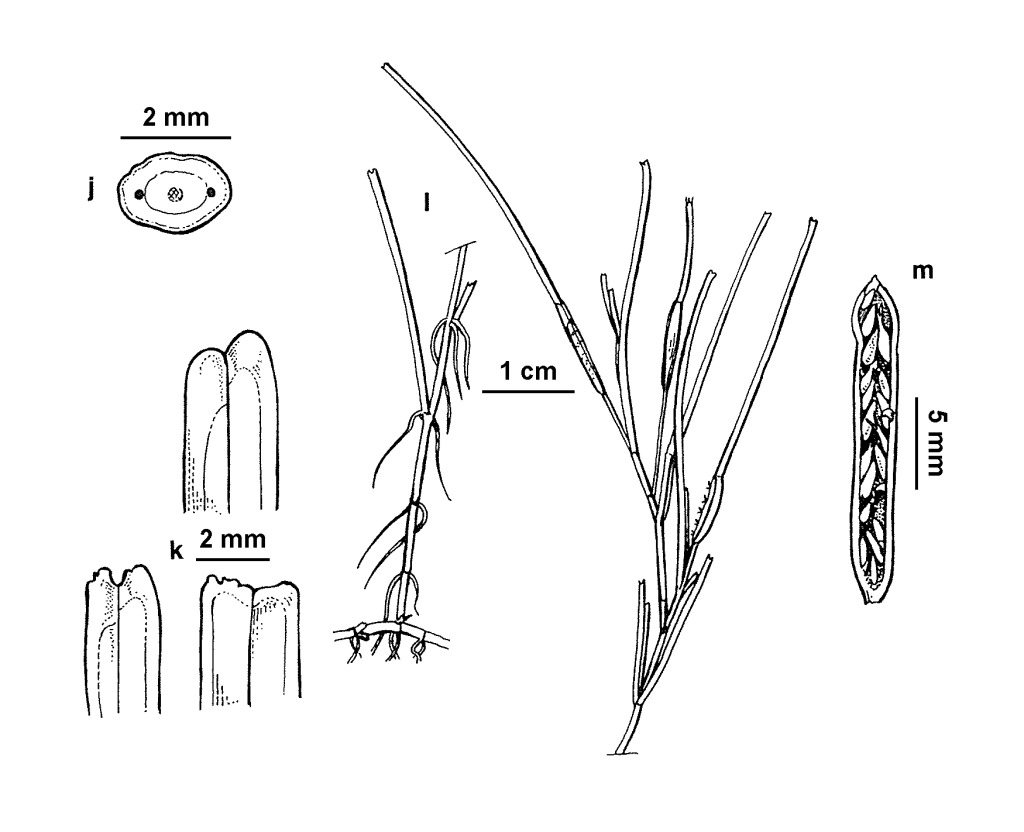Zostera muelleri
Irmisch ex Asch. Dwarf Grass-wrackRoots 2, or 2–10 in 2 groups at each node. Leaf sheath 5(–20) cm long, persisting longer than leaves. Leaves 2–4(–5) per shoot, 5–60 cm long, 1–3 mm wide; apex rounded with a notch; longitudinal veins 3. Generative branches 5–30 cm long, with 1–several spathes. Spadix linear-lanceolate; with 4–12 broadly triangular bracts, each enclosing an anther. Flowers and fruits Oct.–Mar.
GleP, VVP, GipP, OtP, WaP, EGL, WPro. Also WA, Qld, NSW, LHI, SA, Tas. Common in inlets and estuaries on mud and sand in shallow, calm waters.
Les et al. (2002) documented overlap in many of the morphological features used to distinguish Z. muelleri, Z. mucronata Hartog, and Z. capricorni (and the NZ endemic Z. novazelandica) and recommended that they be treated as subspecies (formalized by Jacobs et al. 2006). Further research is required to determine if these taxa represent good species or are better treated as subspecies.
Plants growing in estuarine situations usually have longer leaves with longer flowering branches than the form which occurs in lagoons and other land-locked waters.
Conn, B.J. (1994). Zosteraceae. In: Walsh, N.G.; Entwisle, T.J., Flora of Victoria Vol. 2, Ferns and Allied Plants, Conifers and Monocotyledons, pp. 163–165. Inkata Press, Melbourne.
 Spinning
SpinningSynonyms
Jacobs, S.W.L.; Les, D.H.; Moody, M.L. (2006). New combinations in Australasian Zostera (Zosteraceae). Telopea 11(2): 127–128.
Les, D.H.; Moody, M.L.; Jacobs, S.W.L.; Bayer, R.J. (2002). Systematics of seagrasses (Zosteraceae) in Australia and New Zealand. Systematic Botany 27: 468–484.





